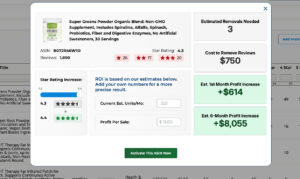
We live in an age of speed. In B2B sales, this is especially so: while one agent is walking around seeking a contact manually, the other has already sent an email, received a reply, and booked a call. In such a scenario, lead generation agencies are faced with the task of not just surviving but also staying competitive when something changes every minute.
Previously, one could bank on fixed databases, hand research, and month-long cycles. Today, that no longer works. Clients want results here and now, which means agencies need to retool their process, tools, and attitude. In this article, we’ll explore which strategies are not only keeping up but leading the charge.
The Shift from Static to Dynamic Data
As an agency, we’re not just searching for contacts — we’re building bridges between product and person. And if that bridge used to be made of Excel and LinkedIn, now it must be built from live, up-to-date data. Static lists become outdated the moment they’re exported. People change jobs, companies shut down, and domains lose relevance.
That’s why increasingly agencies are turning to real-time sources. It’s not a trend — it’s a requirement, because we can no longer spare days of validation. We need data that’s already verified and already in place to use.
This is why there’s an increased demand for exposure to better, fresher, and scalable databases like a B2B leads database, where every contact is not just a row in an Excel spreadsheet but a living, breathing profile with context and history.
What Clients Expect, and What Agencies Must Deliver
Customers don’t want to wait anymore. They need results now, fast, accurately, and with the greatest possible impact. And while the expectations vary in depth, the fundamental needs are now universal:
- Speed, so leads appear within an hour, rather than a week;
- Accuracy, so there are no dead emails or out-of-date job titles;
- Context, to understand who makes decisions and what drives the company;
- Flexibility to feed data into their CRM, pipelines, and processes.
These are not wish list points — these are the new realities shops have to work with. While competition is increasing, the teams that can learn to work within these demands will have an advantage. We can no longer provide “just a list.” We have to give them a tool for growth that integrates into the client’s business and works for them.
As an agency, we have to think not as suppliers but as data operators: how the client processes information, what internal flows they follow, and how we are able to plug in without resistance. This involves technical flexibility but also strategic thinking.
Core Strategies for Remaining Competitive
To avoid getting lost in the flood of new tools and platforms, agencies should focus on a few key strategies. We’ve highlighted the ones that truly work.
Here’s a brief list of core principles:
- Focus on real-time data instead of static lists;
- Automate processes through API and CRM;
- Continuously update client databases;
- Use signals and triggers for targeted outreach;
- Expand sources: LinkedIn, Crunchbase, Clutch, and others.
These approaches not only speed up operations but also improve accuracy. And although each requires work, together they offer agencies what’s most important in business today: control and predictability.
Comparing Traditional vs Real-Time Workflows
To put some perspective on the extent to which things have evolved, we compared the traditional lead generation process with the real-time one. The contrast says it all:
| Workflow element | Traditional lead generation | Real-time lead generation |
| Data freshness | Weekly or monthly updates | Instant, live updates |
| Contact validation | Manual or outsourced | Built-in, automated |
| Outreach timing | Delayed by research and prep | Immediate, post-validation |
| Source diversity | Limited to LinkedIn or purchased lists | Multi-source aggregation |
| CRM integration | Manual import/export | API-driven sync |
| Trigger-based targeting | Absent or delayed | Real-time alerts (job change, funding) |
| Cost per lead | Higher due to manual effort | Lower via automation |
| Scalability | Limited by team size | Scalable via tech stack |
As significant as it takes to process reengineering to move to real-time, the benefit is clear. What we receive is not speed, but depth and accuracy that were previously unattainable. This shift also empowers teams to act with confidence, knowing their outreach is based on verified, current data.
How to Build a Future-Proof Lead Engine
One way or another, the agencies will have to think not only about work today but also about work tomorrow. We don’t know what platforms will exist tomorrow, but we can anticipate their integration today. Here’s how:
- Build pipelines on APIs, not interfaces;
- Use multi-sourcing-support databases;
- Schedule data updates: daily, weekly, monthly;
- Monitor signals: job changes, investments, vacancies;
- Deal with platforms that don’t just provide data but allow it to be expanded and updated.
That gives agencies the freedom to react to the client, the market, and changing circumstances. And while it takes work, the payoff is worth it.
Final Thoughts: Speed Is Not Enough
And still, it is only half the fight. True competitiveness is based on accuracy, flexibility, and responsiveness. Agencies that can handle actual real-time data aren’t simply establishing processes; they’re establishing ecosystems where every interaction is a chance, not a danger.
Which is why real-time transition is not just an upgrade — it’s a paradigm shift. We don’t hunt leads anymore — we establish flows, sift signals, and refresh databases. And if we want to stay in the game, we need to lead, not follow.
And by the way, if you’re still working with static lists, now’s the time to rethink your approach. Because in a world where everything is decided in seconds, the winner is almost always the one who knows how to act instantly.



